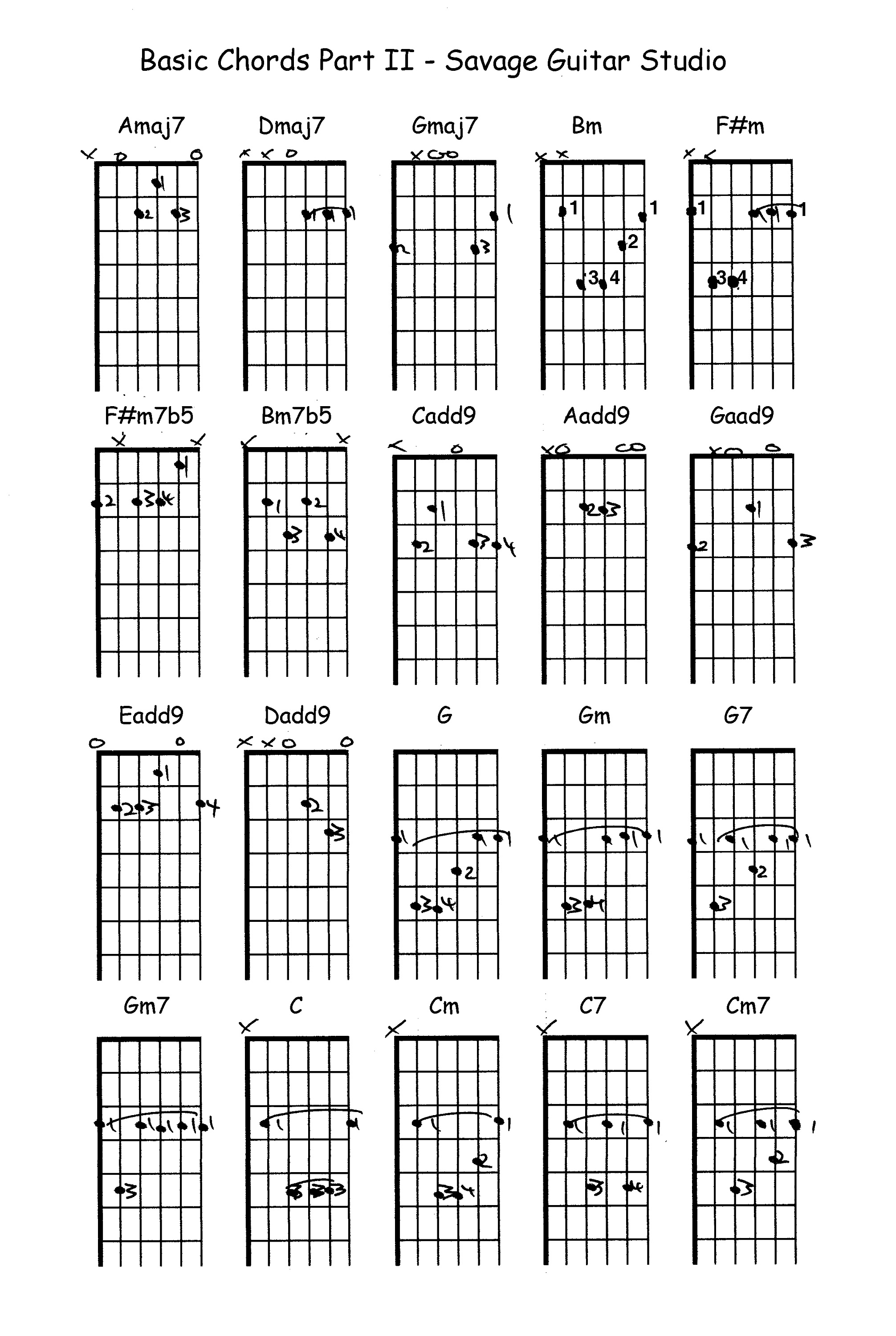


The little ‘o’ on top of the Low E, G, B and high e-string means these are ‘open strings’.And your third finger (ring finger) on the 4th string (D-string) on the second fret.The Em (E minor) chord starts with your second (middle) finger on the 5th string (A-string) on the second fret.The notes of the D major chord are: D – F# – A (first, third and fifth notes of the D major scale).The little ‘o’ on top of the D-string means it’s an ‘open string’.The 5th and 6th string are muted (see X’s), so only hit the lower 4 strings with the strumming hand.And finally your third finger (ring finger) on the 2nd string (B-string) third fret.Your second finger (middle finger) on the 1st string (high e-string) on the second fret.The D major chord is played starting with your first (index) finger on the 3rd string (G-string) on the second fret.The notes of the E major chord are: E – G# – B (first, third and fifth notes of the E major scale).The little ‘o’ on top of the Low E string and B and high e-string means they are ‘open strings’.And your third finger (ring finger) on the 4th string (D-string) third fret.Your second finger (middle finger) on the 5th string (A-string) on the second fret.The E major chord starts with your first (index) finger on the 3rd string (G-string) on the first fret.The notes of the G major chord are: G – B – D (first, third and fifth notes of the G major scale).You can strum all the strings with your strumming hand.The little ‘o’ on top of the D G and B-string means these are ‘open strings’.Your third finger (ring finger) on the 6th string (high e-string) third fret.

Your second finger (middle finger) on the 6th string (low E-string) on the third fret.The G major chord starts with your first (index) finger on the 5th string (A-string) on the second fret.The notes of the A major chord are: A – C# – D (first, third and fifth notes of the A major scale).The little ‘o’ on top of the A and high E-string means these are ‘open strings’.And finally your third finger (ring finger) on the 2nd string (B-string) second fret.Your second finger (middle finger) on the 3rd string (G-string) on the second fret.The A major chord is played with your first (index) finger on the 4th string (D-string) on the second fret.The notes of the C major chord are: C – E – G (first, third and fifth notes of the C major scale).The little ‘o’ on top of the G and high E-string means these are ‘open strings’.The 6th string is muted (see X above 6th string), so only hit the lower 5 strings with the strumming hand.And finally your third finger (ring finger) on the 5th string (A-string) third fret.Your second finger (middle finger) on the 4th string (D-string) on the second fret.The C major chord is played with your first (index) finger on the 2nd string (B-string) on the first fret.Pick one of the chords in the list below to quickly jump to chord diagram and explanation. The numbers on the dots in the chord diagrams above indicate the finger positioning:ġ = index finger, 2 = middle finger, 3 = ring finger, 4 = pinky Learn the chords thoroughly and memorise them to build your most important chord vocabulary:
#GUITAR NOTES HOW TO#
To learn how to read chord diagrams check out: How to read Chord Diagrams and Other Chord Notation.Ĭheck out the 8 most essential chord diagrams below. We’re going to show you how to play each chord step by step and how and where to put your fingers on the strings. If you’re interested check out The Four Most Essentiall Barre Chords. All barre chords are derived from open chords. The open chords are also the starting point and components for the more advanced chords that follow like barre chords. Not all of these songs are originally in the key of G but you could easily fix that with the help of a capo and play it in the appropriate key. Songs like “I’m yours” by Jason Mraz, “With or without you” by U2 and “She will be loved” by Maroon 5 can all be played with just these 4 chords.


 0 kommentar(er)
0 kommentar(er)
